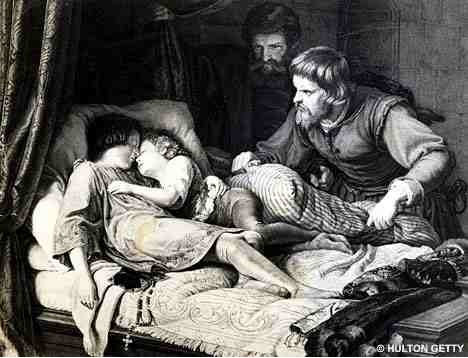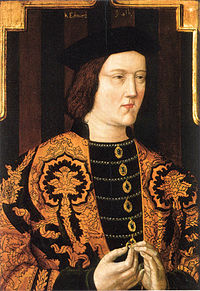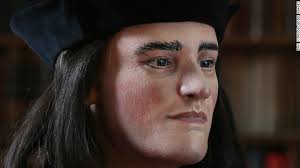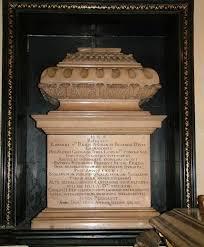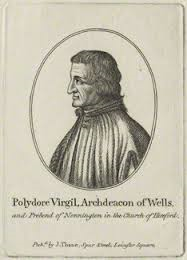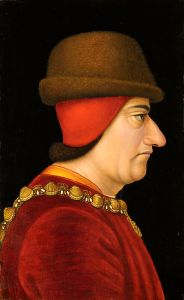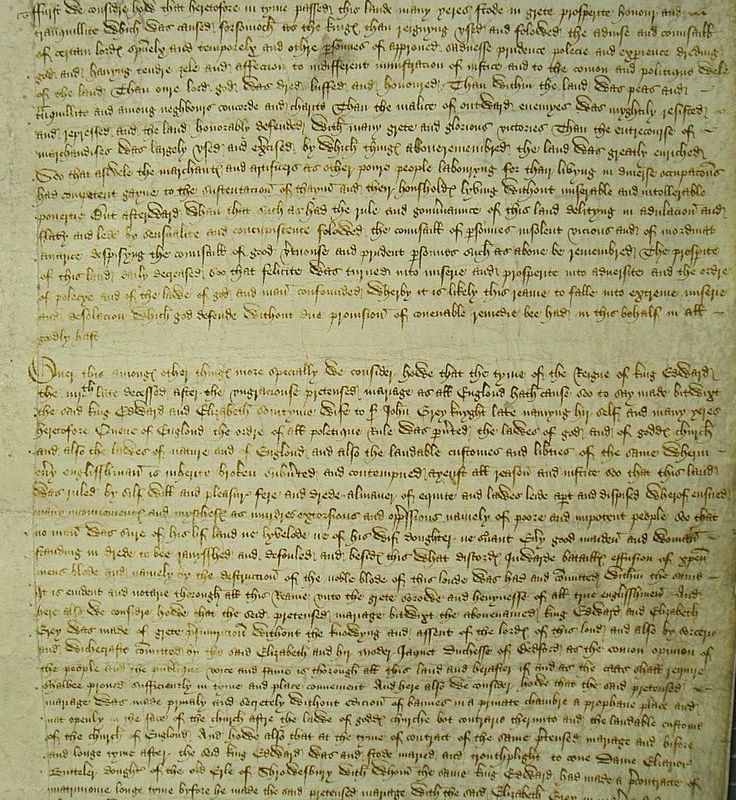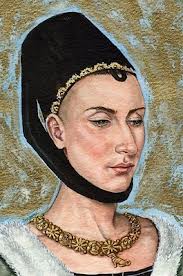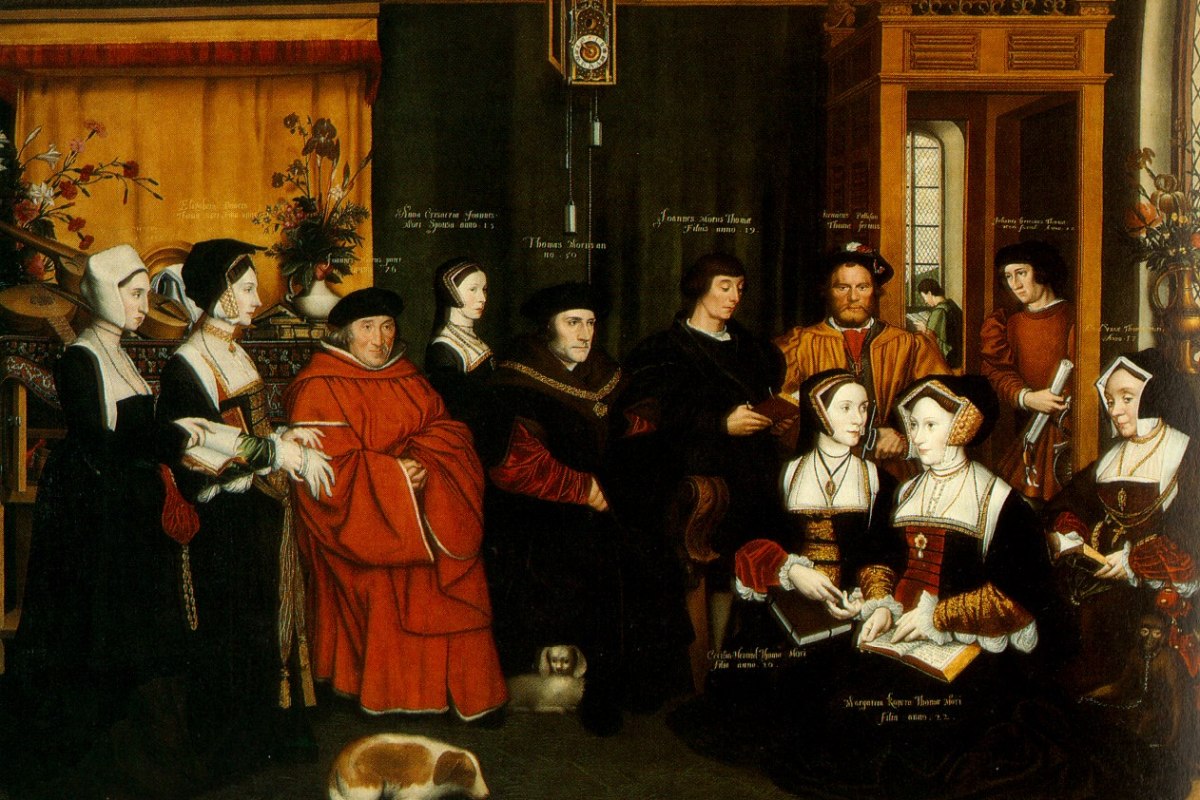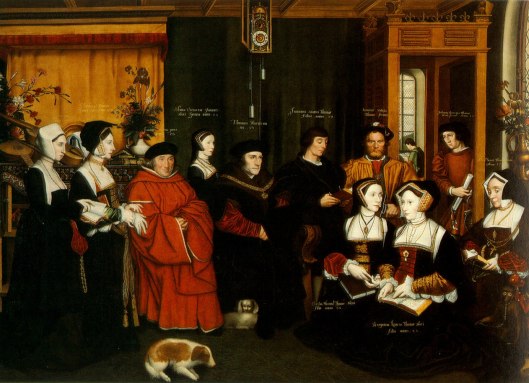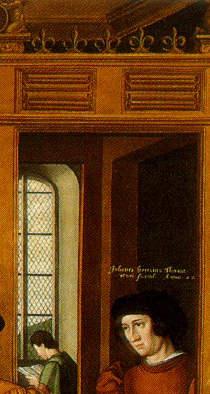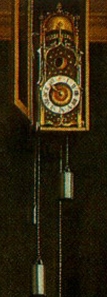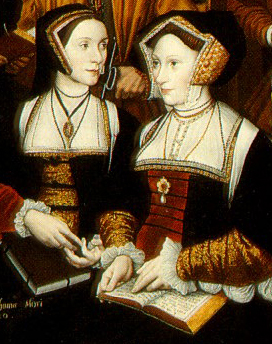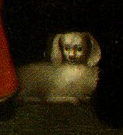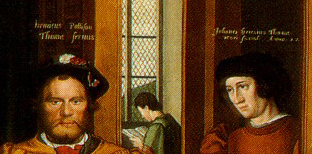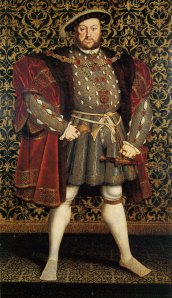A paper by Professor Tim Thornton of the University of Huddersfield, first published on 28 December 2020 and available here, has reached the national press, for example here, with claims that it has solved the mystery of the Princes in the Tower and proven the version of events provided by Sir Thomas More to be accurate. The paper is very interesting in its consideration of the emergence and evolution of the stories of the Princes in the Tower, with a focus on Richard III’s culpability in the murders. However, it will come as little surprise that I don’t see anything conclusive, and I concede that efforts to portray it as resolving the mystery may be tabloid clickbait headlines rather than Professor Thornton’s assertion, while noting that he believes it means More ought to be given almost unquestioned credence. The paper overlooks several aspects of More’s account as it reaches to establish the veracity of his version of the events of 1483.
Essentially, the proposition is that the two sons of Miles Forrest, one of those More identifies as the murderers of Edward V and Richard, Duke of York, the Princes in the Tower, were at the court of Henry VIII, and acted as servants of Cardinal Wolsey. Having come into contact with Sir Thomas More, their testimony against their father is assumed to have been volunteered and used by More to record a true and accurate account of the murders thirty years later. I have previously written about my issues with More’s Richard III as historical evidence, including here and here, but I thought I would address it again in light of this new connection.
Professor Thornton is clear that the Forrest brothers, named Edward and Miles, cannot be definitively identified as the sons of the Miles Forrest of More’s account. The evidence cited is, though, compelling enough to accept that they probably were the sons of the servant of Richard III associated by More with the murders. The assertion that they came into contact with Sir Thomas More on occasions is established, but otherwise uninterrogated. There is an assumption that they were willing to tell the story they knew about their father to More for inclusion in his version of the event of 1483. This relies on the brothers knowing the story. When Miles Forrest died in 1484 and his widow and son Edward were provided an annuity by Richard III, no age is given for Edward, but there is a presumption that he was still quite young. The younger sibling, Miles, is not mentioned at all, suggesting he may have been no more than a babe, or even that he was born after his father’s death.
Assuming for a moment that Miles Forrest took part in the murders as More asserts, the Forrest brothers must have been too young in 1484 to have known or understood what their father had done. How, then, did they come to know such a story? Their mother may have told them, or another close associate of their father, but to what end? If it was such a secret that no one knew of Miles Forrest’s involvement until his sons told More, why perpetuate a tale that could only damage the family? Why would the Forrest brothers have been willing to believe the slur on their father if it were related to the years later?
Assuming Miles Forrest was involved in the murders, and his sons knew of their father’s crime, the next problem is their willingness to tell the story to Thomas More. As servants at court associated with Henry VIII and Thomas Wolsey, but not with service to Thomas More directly, it is hard to unravel a circumstance in which they would have volunteered such a dark family secret to a virtual stranger, even if they were aware he was writing about the events of 1483. As Professor Thornton points out, both men continued a long and successful career, unhampered by their willing association with the most heinous deed in living memory and beyond. Perhaps the sins of the father would not be held against the sons, but I am less certain that the risk would be one worth taking.
So, for me, the connection is interesting, but does not convince me of More’s veracity. The fact of their affiliation in an official capacity gives no hint at the nature of their relationship. The brothers donating information to More that damned their father suggests a level of trust and perhaps even friendship that cannot be evidenced. If the Forrest brothers were rivals during More’s rise, friendly or otherwise, they may have been eviscerated in his story in recompense for some trespass or perceived slight. It is hardly the act of a friend to accuse one’s father of the double murders of royal children.
Part of what makes the account offered by Thomas More superficially plausible is his use of real people sprinkled throughout his narrative. He is the first to involve Miles Forrest and John Dighton, the former clearly identifiable, the latter less definitively so. The messenger used by Richard, ‘one Iohn Grene whom he specially trusted’ possesses a name so common there are several candidates, meaning he may or may not have been real and involved. Of these three names introduced together by More, only one can be confidently attached to a person within the historical record. The other two may, or may not, have existed as the men used by More.
More is the third writer, after Polydore Virgil (some time between 1506 and 1513) and Robert Fabyan (some time between 1504 and 1512), to identify Sir James Tyrell’s involvement. All three accounts date from after Tyrell’s execution in 1502. More’s, however, written after the other two, is the only account to mention a confession of the murders of the Princes in the Tower being given by Tyrell at the time of his arrest, a detail even later Tudor writers appear unaware of. This requires More to have cognisance of something unknown to Virgil, Henry VII’s official court historian, writing almost contemporaneously. It would be odd for Virgil to be unaware of the confession, or for him to know of it, and accuse Tyrell without providing the confirmation offered by his confession. Given that an unverifiable family legend claims that James Tyrell hosted the Princes and their mother at his home at Gipping Hall when Richard III facilitated their meetings during his reign, More and others potentially seized on this truth of his involvement in their story to attach him to tales of their murders. All of the best lies are wrapped around a kernel of truth.
There is at least one other example of More’s incorrect use of a real person to blur or obscure the truth in his telling of Richard III’s story. More’s description of the emergence of the pre-contract story that ultimately led to the decision to bar Edward IV’s sons from the throne on the basis of illegitimacy is startling in bearing all of the hallmarks of throwing the kitchen sink at the problem. Dr Ralph Shaa’s sermon at St Paul’s Cross began, More relates, by alerting the people ‘that neither King Edward himself nor the Duke of Clarence were lawfully begot’.1 In the charge that Edward was described as illegitimate, More appears to follow Dominic Mancini’s difficult, and often inaccurate, account of events. Mancini, an Italian visitor to England in the pay of the French court, most likely as a spy, spoke no English and never met any of the central figures in the story he relates. Mancini himself describes his wish not to write down his account, but his resignation to doing so at the insistence of his patron.2
Mancini relates that the sermon insisted ‘that the progeny of King Edward should be instantly eradicated, for neither had he been a legitimate king, nor could his issue be so. Edward, they say, was conceived in adultery’.3 Here, Mancini probably betrays his continental bias and lack of understanding of England and English. The story that Edward was illegitimate, the son of an archer who shared his huge frame, was current at the French court throughout the reign of Edward IV and was a favourite joke of King Louis XI. Unable to understand what was said, if he even witnessed the sermon, Mancini layers what he knows, and what he believes his audience will appreciate and relate to, over the gaps in his comprehension. Mancini later adds that Shaa ‘argued that it would be unjust to crown this lad [Edward V], who was illegitimate, because his father King Edward [IV] on marrying Elizabeth was legally contracted to another wife to whom the [earl] of Warwick had joined him.4
More uses this charge, demonstrating that Mancini’s account may well have been in circulation in England, since no other contemporary or near contemporary, and no English, source mentions it. He adds the claim that the sermon designated George, Duke of Clarence as illegitimate too. This is novel. The reason for Clarence’s exclusion, or rather that of his children, since he had been executed in 1478, was his attainder for treason which parliament extended to exclude his descendants from the line of succession.5 Mancini was clear that this was the reason for the exclusion of Clarence’s children from consideration; ‘As for the son of the duke of Clarence, he had been rendered ineligible for the crown by the felony of his father: since his father after conviction for treason had forfeited not only his own but also his sons’ right of succession.’6 The Crowland Chronicler concurs that this was the reason for overlooking Clarence’s children; ‘the blood of his other brother, George, Duke of Clarence, had been attainted’.7
More continues to describe the pre-contract, the legal basis on which Edward IV’s children were declared illegitimate due to bigamy, naming Dame Elizabeth Lucy as the wife of King Edward IV before his marriage to Elizabeth Woodville. More then explains that Dame Elizabeth Lucy was brought to London in 1483, only to deny that she had been married to Edward IV.8 Mancini believed the pre-contract related to a marriage made by proxy by the Earl of Warwick on the continent.9 The lady identified as Edward’s first wife was, in fact, Lady Eleanor Butler, née Talbot, a daughter of the Earl of Shrewsbury, who had died in 1468.10
Elizabeth Lucy was a long-term mistress of King Edward IV, and was possibly the mother of one or more of his illegitimate children, perhaps including Arthur Plantagenet, Viscount Lisle. Her introduction by More into the story of the pre-contract in 1483 demonstrates the use of real, documented people improperly within the story to both add credence to his version and remove credibility from Richard III during the events of 1483. It is possible that Miles Forrest served a similar purpose for More. Details are also added by More that do not appear in other versions before or immediately after he wrote his account. Most notable of these is the supposed confession provided by Tyrell and John Dighton, Miles Forrest’s accomplice. ‘Very truth is it and well known that at such time as Sir James Tyrell was in the Tower, for treason committed against the most famous Prince, King Henry the Seventh, both Dighton and he were examined, and confessed the murder’.11 The phrase ‘Very truth is it and well known’ reads a little like ‘honest guv’nor’, particularly when no other writer records something supposedly well-known and so critical to the establishment of Richard III’s, and Tyrell, Forrest and Dighton’s, guilt. The introduction of the idea that Dighton ‘yet walks alive, in good possibility to be hanged ere he die’ only seems to add more incredulity to the tale. A confessed regicide and child murderer is simply allowed to walk away after confirming his guilt? Miles Forrest is described as ‘a fellow fleshed in murder’ when explaining his selection for the job of killing the Princes, so if his sons were More’s source of detail about their father, they must have despised the man who died when they were both young, possibly too young to even remember him.
The proliferation of other fates ascribed to the Princes in the Tower is also suggestive that, despite More’s insistence, their doom in the manner described by More was not well-known. One version that is worth particular mention is that of John Rastell, published in 1529. Rastell related the attempt to smother both boys, during which the younger escaped, was caught and had his throat slit.12 Rastell wrote that there were several theories about what happened to the bodies, including that they were locked alive inside a chest and buried beneath stairs in a similar story to More’s. Yet his first assertion is that they were placed into a chest, sailed along the Thames and thrown overboard on the way to Flanders.13 The variance in the story is narrowing, but more than a decade after More’s version was compiled, it is clear that other narratives still had currency. Rastell’s input is of particular interest because he was Sir Thomas More’s brother-in-law, married to Elizabeth More. Both Thomas and John were lawyers in London too, so it seems striking that more than ten years after More’s account, based on certain knowledge, testimony of witnesses and a signed confession which was ‘well known’, Rastell still presented alternative stories from his brother-in-law; similar, but not identical, still uncertain, and apparently unaware of the confessions.
Conviction that More presented a factually accurate account of events is demonstrably incorrect. The very first sentence of his The History of King Richard the Third is erroneous, not as a matter of interpretation or opinion, but of fact. ‘King Edward, of that name the fourth, after he had lived fifty and three years, seven months, and six days, and thereof reigned two and twenty years, one month, and eight days, died at Westminster’.14Edward IV was born on 28 April 1442 and died on 9 April 1483. He was therefore forty years old, a few weeks short of his forty-first birthday, not fifty-three. More therefore begins with an error, compounded by the precision he claims, down to the number of days. If the counter to this observation is that More surely meant to go back and check his data, then why be so precise, and why never correct something relatively easy to confirm, and why assert hids other claims are unquestionably true? Part of the reliance on More is anecdotally based on assertions that as a lawyer and a devout man, he would do his research properly and would not present lies, yet he does just this with his first sentence. He goes on to describe Edward V as ‘thirteen years of age’ when he was in fact twelve years, five months old, and his brother Richard as ‘two years younger’ when the Duke of York was nine years and seven months old at the time of their father’s death, three years younger.15
It is worth considering what More hoped to achieve by writing his History, and whether it ought to be considered a work of history as it might be presented today. I believe More’s work should be read as rhetoric and allegory rather than a factual work of history. More’s other famous work, Utopia, describes a perfect society. The full title of the work, published in 1516, at the same time More was gathering his story of Richard III together, translates as ‘A little, true book, not less beneficial than enjoyable, about how things should be in a state and about the new island Utopia’. A true book about a fiction island? More’s ideal pardise has many striking features; slavery (each household has two slaves) raises the question of whether the perfect society is perfect for everyone. There is no private property, euthanasia is legal, priests are permitted to marry, and a number of religions exist tolerant of each other. These are all societal structures held up as a model of perfection, but which More himself fundamentally disagreed with.
The errors that open his History are perhaps the clearest signpost that what follows is not an accurate relation of history. It may, or may not, be pertinent that King Henry VII (28 January 1457 – 21 April 1509) was fifty-two at his death, much closer to More’s description of Edward IV’s age. The two innocents destroyed for the new regime that wished to establish itself on the death of the old king might be intended to represent Sir Edmund Dudley and Sir Richard Empson, executed on 17 August 1510. Though they were not innocents in the sense that young children were considered to be, nevertheless they were arrested on Henry VIII’s accession and subsequently executed for no crime but doing as Henry VII had instructed them. It was a cynical and brutal bid for popularity. If read through this lens of contemporary political commentary, Richard III is used a vehicle to safely deliver an otherwise dangerous message; that tyrants who begin their reigns with unjustifiable murders risk losing the kingdom, the crown, and their lives.
The development of the manuscript through the 1510’s could have been a reaction to this unnerving early sign of reckless tyranny by the young Henry VIII. The work could then have been abandoned as More moved into royal service and either hoped to affect and influence the king and his policy in person, or felt the device too dangerous. The risks were something Sir Thomas would have been acutely aware of, if his son-in-law William Roper is to be believed. Roper related that Thomas More had, in parliament in 1504, made an eloquent and impassioned speech against Henry VII’s taxation that had affected the king’s income and led to the arrest of his father Sir John More on trumped-up charges as a warning to the young lawyer, who was protected by parliamentary privilege.16 Whatever the truth, More did put his manuscript down and never completed or published it, both tasks later undertaken by his nephew William Rastell, son of More’s sister Elizabeth and brother-in-law John.
As a lawyer, More’s Richard III may have been little more than a legal exercise that was never meant for public consumption. Utopia was an example of arguing for a set of beliefs and standards that More fundamentally disagreed with. Can a case be constructed with minimal evidence and all of it circumstantial and hearsay testimony? Was he testing his own belief in Richard III’s character and guilt based on the stories related by his former patron Archbishop Morton? Was the manuscript Morton’s work, revisited by a former pupil, but abandoned for lack of evidence and the obvious errors included? Thomas More spent time as a teenager in the household of John Morton, Archbishop of Canterbury and Chancellor after the accession of Henry Tudor. Morton was an inveterate and irreconcilable enemy to Richard III for reasons that remain unclear, and was arguably the greatest beneficiary of the Tudor victory at Bosworth besides the new king. This raises the possibility that More’s understanding of Richard III’s story was heavily influenced by Morton, who told the tale both to explain away his own part in treason and to indoctrinate young men into a new regime, strengthening its foundations, to protect his new prominence. Professor Thornton suggests that Morton’s personal testimony could have informed More’s reference to strawberries at the 13 June 1483 council meeting,17 but this would require the addressing of More’s additional reference to Richard’s withered arm, displayed at the meeting, which his skeletal remains have proven not to have existed.18 In addition, More repeats the claim that Lord Stanley was not only at this infamous meeting, but was injured and arrested.19 No contemporary source places Lord Stanley at the Tower that day, and the suspicion of his involvement in treason and arrest on 13 June makes little sense in light of his position carrying the Constable’s mace at Richard III’s coronation on 6 July.20
More potentially explored the use of a legal charge of notoriety to establish guilt in a crime. He may have been aware that a significant element of Titulus Regius, the act of parliament in 1484 that set out Richard III’s title to the crown, rested on a charge of notoriety to place a burden of proof on the accused.21 In Titulus Regius, the burden of proof was placed on the children of Edward IV to prove their legitimacy because of the notoriety attributed to the claim that Edward IV had married their mother bigamously. Titulus Regius purported to be a replication of the petition placed before Richard III in June 1483 asking him to take the throne. At the time, the children of Edward IV were not in a position to defend their legitimacy, so the charge of notoriety was a mechanism to avoid the scrutiny of an ecclesiastical court, to the jurisdiction of which a charge of legitimacy should usually have been referred. By 1484, More contended that the Princes were dead, so unable to counter the charge of notoriety. In More’s story, ‘Very truth is it and well known’ serves the same purpose. It introduces notoriety, placing the burden of proof on the accused who, in Richard III, is certainly dead and unable to refute the charge. Did the lawyer in More wonder whether this was enough to prove the case? He may be disturbed to find that 500 years after he wrote it, his unpublished work is used widely as proof of Richard III’s guilt and the detailed manner of the murders, as well as to convict Sir James Tyrell, John Dighton, and Miles Forrest of involvement.
Professor Thornton’s discovery of a connection between Sir Thomas More and two men who may well have been the sons of Miles Forrest is a fascinating addition to the thin but important bank of information on the events of 1483. No evidence appears to survive as to the nature of their relationship, so More’s use of the man likely to have been their father may be the result of rivalry or animosity as easily as a voluntary confession. It also does little to add weight to the claim that More’s work is accurate and to be believed. There remain too many unaddressed inaccuracies and problems, the above being by no means an exhaustive survey thereof. Contemporaries provided different versions of the event More described as well-known. His brother-in-law published an account more than a decade after Sir Thomas laid down his manuscript that was similar enough to suggest they had discussed it, but different enough to highlight the uncertainty still alive in 1529. The fixation on More, the desperation to prove his version of events authentic and truthful, and to attribute the murders of the Princes in the Tower to their uncle King Richard III consistently refuses to allow sufficient attention to other potential suspects, but ignores the much bigger question that the available evidence begs. What if there was no murder of the Princes in the Tower in 1483 at all? The narrow debate continues to detract from some of its most fascinating elements.

Footnotes
- Richard III The Great Debate, ed. P. Kendall, The Folio Society, 1965, p86
- The Usurpation of Richard III, Dominic Mancini, trans C.A.J. Armstrong, Alan Sutton Publishing, 1989, p57
- The Usurpation of Richard III, Dominic Mancini, trans C.A.J. Armstrong, Alan Sutton Publishing, 1989, p95
- The Usurpation of Richard III, Dominic Mancini, trans C.A.J. Armstrong, Alan Sutton Publishing, 1989, p97
- Rotuli Parliamentorum, Vol VI, pp193-5
- The Usurpation of Richard III, Dominic Mancini, trans C.A.J. Armstrong, Alan Sutton Publishing, 1989, p97
- Ingulph’s Chronicle of the Abbey of Croyland, trans H.T. Riley, London 1908, p489
- Richard III The Great Debate, ed. P. Kendall, The Folio Society, 1965, pp84-5
- The Usurpation of Richard III, Dominic Mancini, trans C.A.J. Armstrong, Alan Sutton Publishing, 1989, p97
- Rotuli Parliamentorum, Vol VI, p241; Ingulph’s Chronicle of the Abbey of Croyland, trans H.T. Riley, London 1908, p489
- Richard III The Great Debate, ed. P. Kendall, The Folio Society, 1965, p106
- The Pastyme of the People, J. Rastell, 1529, p139
- The Pastyme of the People, J. Rastell, 1529, p140
- Richard III The Great Debate, ed. P. Kendall, The Folio Society, 1965, p31
- Richard III The Great Debate, ed. P. Kendall, The Folio Society, 1965, p31
- The Lyfe of Sir Thomas Moore, Knighte, William Roper, ed. E.V. Hitchcock, London, 1935, pp7-8
- More on a Murder, Professor T. Thornton, The Historical Association, 2020, p20
- Richard III The Great Debate, ed. P. Kendall, The Folio Society, 1965, p70
- Richard III The Great Debate, ed. P. Kendall, The Folio Society, 1965, p71
- Richard III: Loyalty Binds Me, M. Lewis, Amberley Publishing, 2018, pp272-5
- Richard III: Loyalty Binds Me, M. Lewis, Amberley Publishing, 2018, p295


